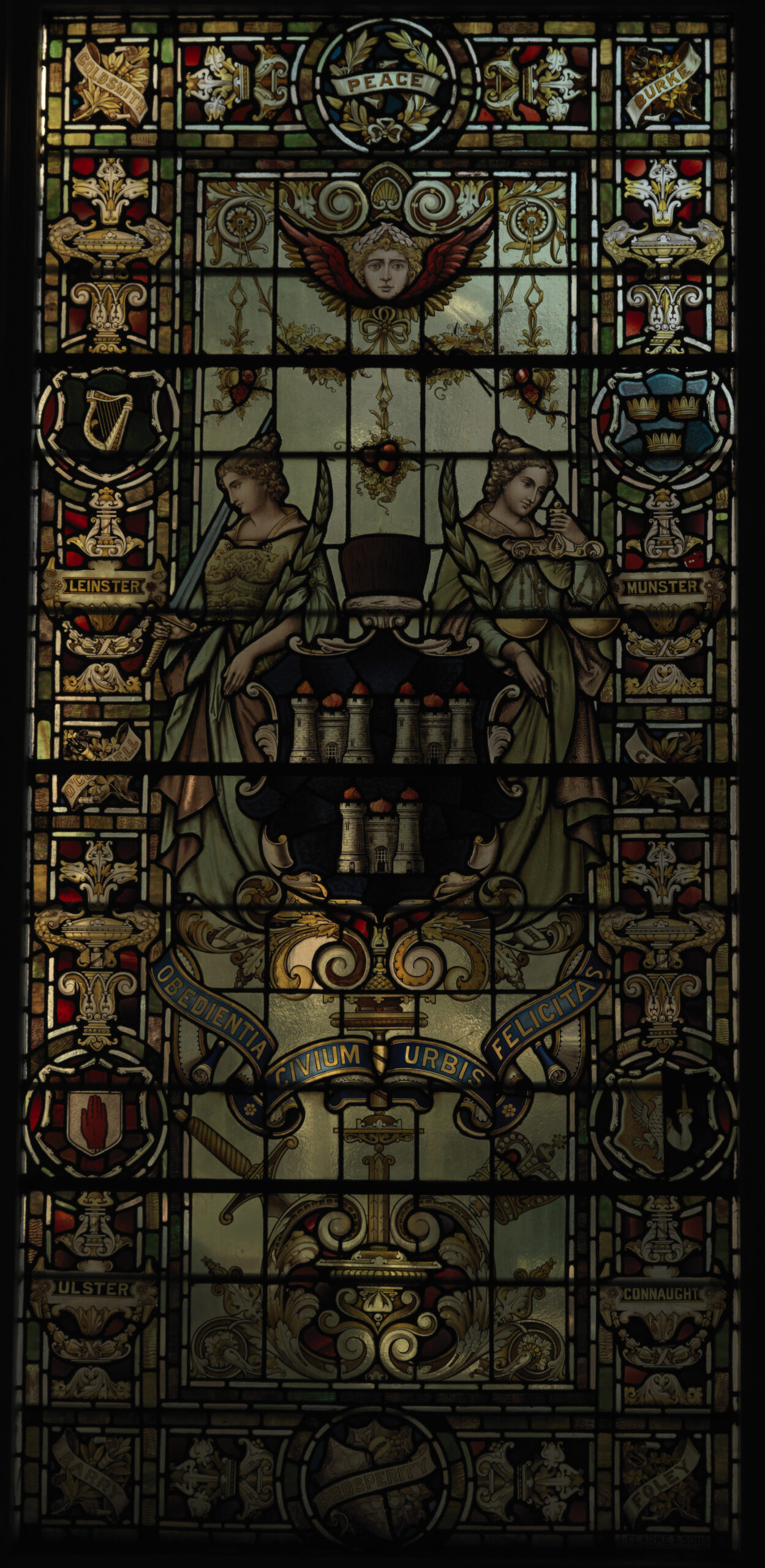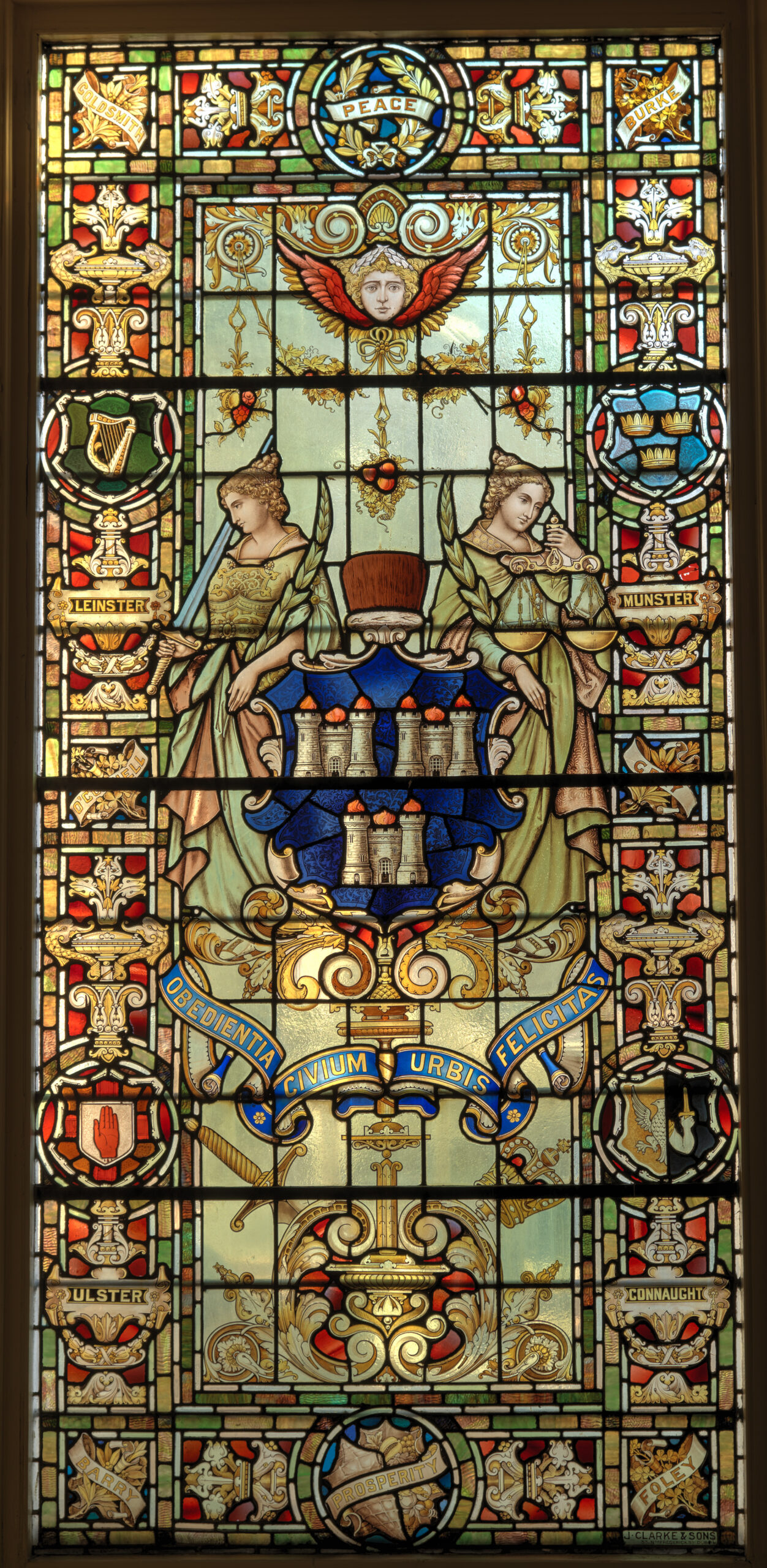TCD's demonstrator project for the Digital Repository of Ireland aims to digitise and catalogue the archive of the Harry Clarke Stained Glass Studios.
Author: Joanne Carroll
Since December 2013, the Digital Resources and Imaging Services of Trinity College have been digitising the archive of the Harry Clarke Stained Glass Studios, held in TCD's Manuscript and Archive Research Library. As a demonstrator project for the Digital Repository of Ireland, we aim to digitise and catalogue the archive of this prolific stained glass studio spanning 80 years. The digital collection will include a large selection of designs and photographs, business records, letters, and other materials relating to the design and commission of stained glass windows in Ireland and around the world. Another aspect of the project is the imaging of Clarke Studio stained glass windows in situ. We have imaged the windows in Belvedere College, where Harry Clarke went to school and a 5-minute walk from the original Clarke Studios on North Frederick Street and windows in St. Michan’s Church, John’s Lane Church and the Mansion House.
It was a huge pleasure to be able to image these windows and meet the people who work, volunteer, and worship in the buildings that house these fine pieces of 20th Century religious art. People we spoke to held an obvious interest in the windows and had a desire to find out more about the designs; the online digital collection is a great resource for people to discover the origins of the windows they have looked at in their parish church possibly their whole lives. The photographing of the windows not only encourages research from interested parties but also furthers our understanding of the material; by going into the field we are able to add further information about the archive and improve the records we hold in the repository.


From left to right: Belvedere College Chapel (fig.1), MS11182-218 (fig.2). Copyright of The Board of Trinity College Dublin.
Our metadata cataloguer, Marta Bustillo was able to recognize the design (MS11182-218) that the window may have come from, a design that had not been originally identified in the archive.


From left to right: MS11182-537 (fig.3), Belvedere College Chapel (fig.4). Copyright of The Board of Trinity College Dublin.
Window above the altar in Belvedere College Chapel; you can see clearly the navy sash connecting the three panes and small details of faces in fig. 3; these are not explicitly visible in the window.
Although the photographing of the windows provides a great resource and potential for research, producing the images is not without its problems. Stained glass can be quite difficult to photograph due to the high levels of contrast between the window, which is backlit, and the frame/environment of the building, which can be dark. Because of this, it is usually necessary to have long exposure times, which can result in some camera shake and distortion in the final image. This was remedied by using a tripod, the timed shutter release button, and the ‘mirror-up’ button to reduce the risk of camera shake and provide a crisper image. Another issue with backlighting of windows is the lack of consistency of the light source from the windows e.g. buildings outside blocking light through a particular window or section of a window. One solution was to use the ‘bracketing’ function of the digital camera; a technique of taking several shots using different exposure levels. This would allow us in postproduction, using HDR software to blend the images and get a balanced exposure in the final image, as demonstrated in the images below from a window in the Mansion House:




From left to right: Fig.5, Fig.6, Fig.7, Fig.8 Copyright of The Board of Trinity College Dublin.

Fig. 9: Combined images (fig.5-8) using HDR software. Copyright of The Board of Trinity College Dublin.
The position of the windows is also an issue, not only because of lighting but also because of general access to the window and the perspective of the final image; particularly the keystone effect (when the bottom of the stained glass window looks wider than the top making it look out of proportion). A tilt-shift lens was used to counteract this. Also, when possible a ladder, table, or even scaffolding was used to gain head-on access to windows that are higher up. This is very effective to get direct shots of a window, although lights and other church and building fixtures may get in the way of a head-on photograph. These issues are the reason why stained glass can be challenging to photograph, however, the final images are worth the extra effort.

Fig.10: Scaffolding used to image in John's Lane Church
It is great to have photographs of these stained glass windows, and also have access to the digital archive to see the designs and business records which led to their creation. But there is something missing when stained glass windows are imaged: the ‘feeling’, the aura of the original is lacking. For example the scale of the object is hard to grasp when looking at a digital image; also the feeling you get when you see the light shining through the stained glass window or the mood or atmosphere of the building are hard to portray in a photograph. As Walter Benjamin wrote in 1936 “Even a most perfect reproduction of a work of art is lacking in one element: its presence in time and space, its unique existence at the place where it happens to be.” (‘Art in the Age of Mechanical Reproduction’ -Walter Benjamin) So if you can, visit these windows in their unique existence and use the digitised collection to explore them and gain a further understanding of the Harry Clarke Studio Archive and the beautiful windows the Studio created.
To read more entries in the DRI blog, please visit the Blog Page.





